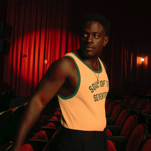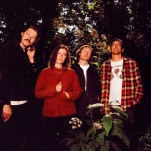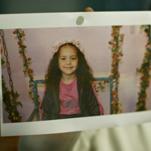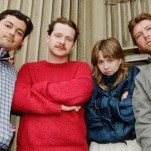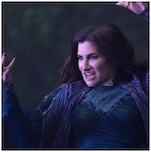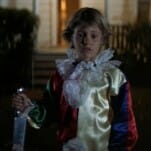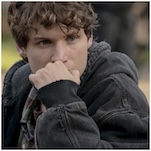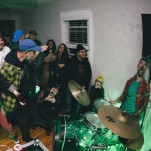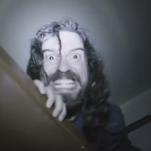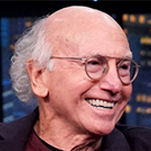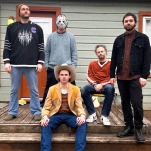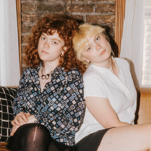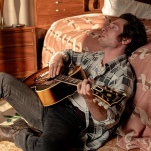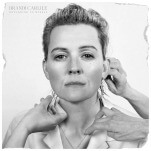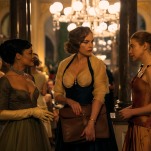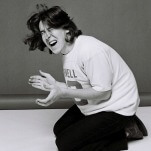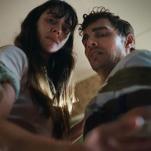Koko-di Koko-da Filmmaker Johannes Nyholm Explains How One of the Year’s Best Horror Films Was His “Personal Exorcism”
Photos Courtesy of Dark Star Pictures/Johannes Nyholm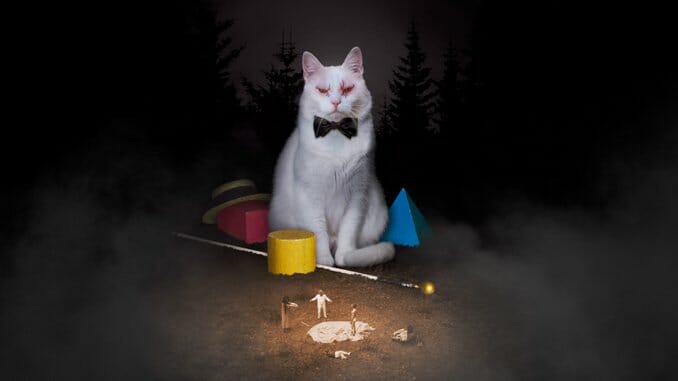
Coincidence is fickle, but every now and again it has its perks. Case in point, 2020, the year of unending plague, has made Johannes Nyholm’s Koko-di Koko-da twice as relevant as it would’ve been before fate saw his movie’s release delayed a whole year. Koko-di Koko-da (one of Paste’s top horror movies of the year) enjoyed a trip through virtual cinemas early last month, and now arrives on VOD for everyone’s viewing pleasure as they go through the existential dread of living the same day over and over again courtesy of the COVID-19 pandemic. Thanks, coronavirus!
Paste Zoomed with Nyholm in November to revisit his work now that it’s finally commercially available and ripe for interpretation in the current global health crisis:
Paste: Koko-di Koko-da was supposed to come out around this time in 2019. Then it got pushed to March, and then the world shut down and it got pushed to now. So unexpectedly, this movie you have about people reliving the same day feels eerily appropriate for the circumstances we’re in, where we’re all living the same day. So, now that you’ve got the long view on the film, how do you feel about it now that it’s playing to people under these conditions?
Johannes Nyholm: I guess it’s a bit strange. The film is a lot about getting trapped in a place and a time. It’s very claustrophobic. I guess it’s easier than ever for people to relate to that situation. But it’s even more important now, that kind of hope as well. I think I’ve given some kind of hope, even though it’s super tragic in so many ways, this loss that [the characters] experience and what they are going through. Still, I think it’s more important than ever to have this notion of hope.
Paste: Not to reveal too many details from where the film ends up going, but to me, this film now speaks to the idea that yes, there is a way out. There is a point where this stops. “Timely,” “of the moment”: These are buzz phrases that people will throw around, but in a way, do you feel like the power of the film has increased now that we are where we are?
Nyholm: Well, it’s easier for people to relate, for sure. I can see that. I mean, in a way this is what we, and everyone else, is experiencing right now, getting trapped in a certain situation and not being able or allowed to go anywhere. They are trapped in their own minds. It’s about being trapped in their own prison in a way, in their own prison of grief, or their own prison feeling this majestic loss. We are trapped in another circumstance. Maybe it’s not in our mind so much, but maybe in one way, it is also. I think we’ve experienced a loss of freedom in a very general way, but that’s also what this film is about a lot to me: Loss of freedom in the memories.
Paste: This prison of grief the characters are caught in is interesting because we’re caught in a prison not of our own design. This is a prison that was foisted on us, and it’s the same prison around the world. When you talk about relating, I assume that’s what you mean? This is collective grief we’re going through.
Nyholm: Yeah, for sure. And I’m not sure that the experience is so much different if it’s in your mind or not. If it’s a factual structure that’s surrounding you or it’s just in your mind, the experience is probably quite similar anyway.
Paste: Every story you hear about the pandemic is of a piece with others. But this story is so different from other horror stories I’ve seen this year, or last year. The way that the different influences I sense in the film come together, they create something very, very unique. Where did you pluck those influences from? This movie is driven by mood and atmosphere and design. It feels to me that I would appreciate it even more if I had the cultural basis for it, like the music box for instance.
Nyholm: Yeah. I mean, a lot of the origin to the film is my own experience. Nothing exactly like in the film has happened to me, but similar things that evoked similar physical, psychological sensations. It’s inspired by dreams I had, or actually things that happened when I was very little, things that I went through in those years. I don’t remember so much of it, but still, when I think of it, I know that certain things that happened inspired the movie, like stories I heard when I was a kid. My parents split up when I was really young. My dad read fairy tales to me and my older brother back then. And I think that story, it was also about losing your freedom, about getting trapped and losing freedom and different mind games. I think that also inspired this. Except from life and my own dreams, I think that a few fairy tales are what inspired me most.
Paste: It always strikes me how the tales that we read as kids stick with us into our adulthood, you know? If this is something that has stuck with you since childhood, was the experience about working out that fear, those memories that you’ve had since you were so young? This feels like an attempt at a personal exorcism where you’re getting these feelings out.
Nyholm: Yeah, for sure. That’s for sure what it’s about—it’s my personal exorcism. I think a lot of my filmmaking, or why I want to do stuff, is to get it out of the system, to get it out there to show what’s going on in my mind, the things that I can’t really put into words myself. I mean, it actually helped me a lot just telling this story, because I understood myself a little bit better, I think. It’s the classical thing where you say that artists don’t like to go into psychoanalytic analysis because it’ll ruin their art. [laughs] I’m old fashioned like that.
Paste: It’s interesting that you’re describing these feelings as being something you can’t put into words, because this movie is so light on dialogue. It’s very image-driven. When you think about putting words into images, if you can’t put it into words, how do you wind up taking that and putting it into an image? Again, the images here are so striking, I think a lot about the way each time loop ends on almost impressionistic overhead shots.
Nyholm: I work a lot with perspectives. It’s not conscious. I realized it afterwards that most of the choices are unconscious. For example, the daughter that goes away in the beginning, a lot of the images afterwards are from her perspective, if she was still alive. Think about when they’re in the car, quarrelling in the car, it’s the child’s perspective from when we were kids and we’d sit there and listen to our parents quarreling. And the end scenes that you were talking about when you see all the people like smaller puppets down there? It’s like the God perspective, but it’s also still the kid’s perspective looking at what is left. She’s in another dimension trying to make her parents be together again, or to stop fighting, and she’s turning this music box back again, one other turn to try to play the music as beautifully as possible so her parents stop fighting.
Paste: So now I’m going to watch it a third time with this part of the conversation in mind. That final image of the music box at the end opens the movie up. Was that music box one of the specific pieces you took from those childhood memories you mentioned?
Nyholm: That was a song I sang a lot as a kid. I didn’t know then why, but I do now!
Paste: We’ve talked a lot about the things we carry and these relatable experiences, so where do you think people are gonna go with this movie? You’ve got that relatability and hope, but what else do you want people to walk away from this movie with? Do you hope people see this and think to themselves, “maybe this is my opportunity to work out my own demons?”
Nyholm: I think I have an idea to give affirmation to people. If you get stuck in that thought process, stuck with depression, stuck with anything, if you’ve gotten lost in an eternal labyrinth, I think I would like to affirm those feelings a little bit and say that it’s okay. It’s okay to feel this way. It will get better. There’s hope. There always is.
Bostonian culture journalist Andy Crump covers the movies, beer, music, and being a dad for way too many outlets, perhaps even yours. He has contributed to Paste since 2013. You can follow him on Twitter and find his collected work at his personal blog. He’s composed of roughly 65% craft beer.

